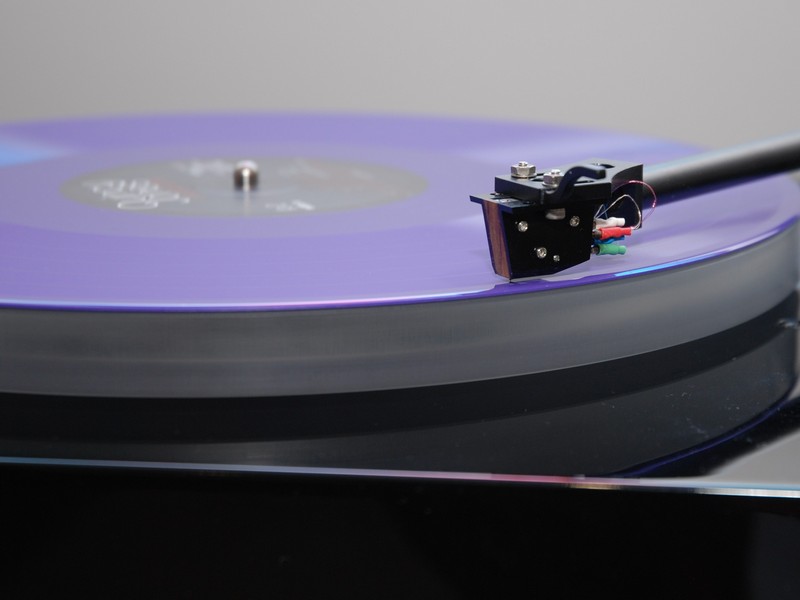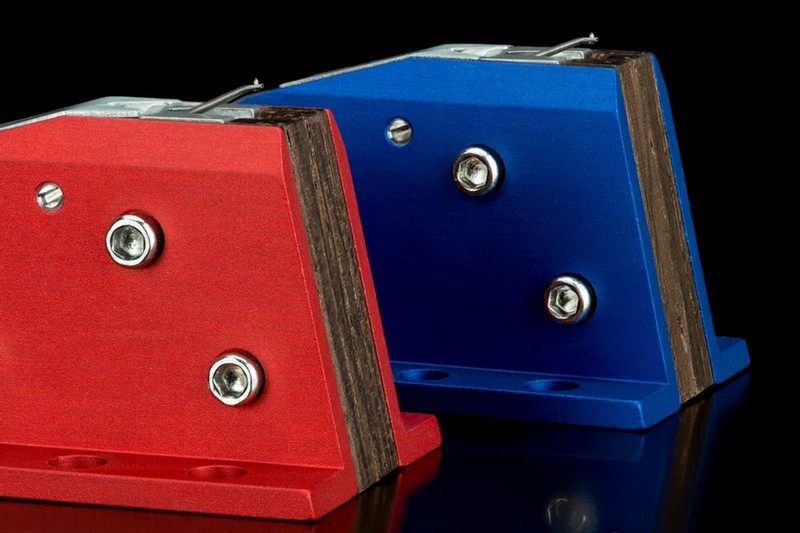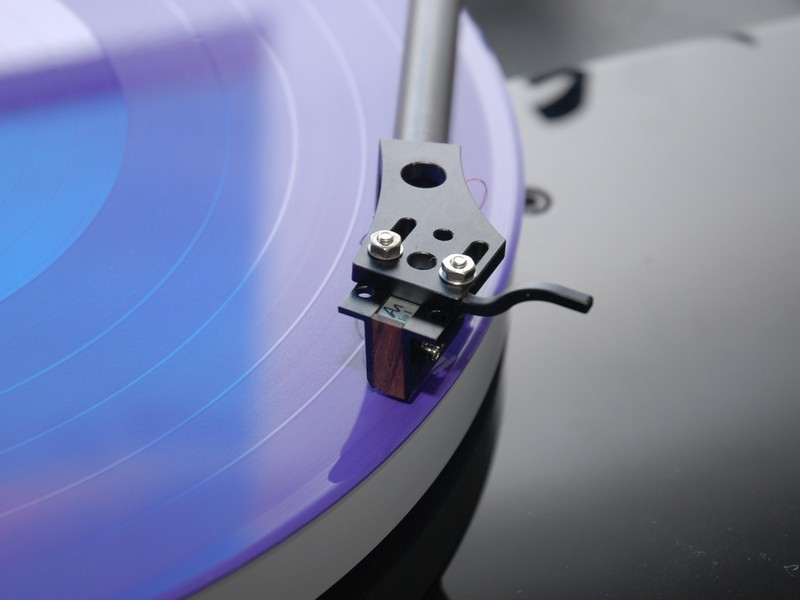Audio Note (UK) Io 1

[ Home | Staff & Contacts | HiFi Playground | Listening tests | DIY & Tweakings | Music & Books ]
Product name: Audio Note Io 1 MC Cartridge
Manufacturer: Audio
Note - Great Britain
Cost: Io 1 4000€, AN S3L Step up 3650€ (Currency
conversion)
(YMMV)
Reviewer: Graeme Budd - TNT
France
Reviewed: March, 2021
A couple of years ago I tested the Audio Note(UK) TT2 Deluxe with the Arm 2(II). At the time the testing was done with the associated IQ3 MM cartridge and after the review Peter from Audio Note happened to drop the following in one of his emails "just wait until you hear it with an Io1 cartridge". Well who am I to refuse and as he sent me one and it's been on and off the 'table for a while during various other reviews it's only right that it gets its own write up.
But firstly a bit of info about the Io range of cartridges and (as we'll see) the necessary ancillaries you'll need to run one. The Io range has 4 models in it which are called Io1, Io2, Io Gold and Io Ltd. The first 3 have the usual permanent magnets you'd find in most cartridges - the differences between them are in the type of diamond used and their mass whereas the Ltd has field coils to provide the magnetic field and hence has an additional power supply and requires two extra wires on your tonearm. Fortunately the version I have here is fairly simple to use but there is a trap for the unwary so fingers on buzzers and let's see if you spot it:
The AN(UK) web site lists the Io1 spec as follows:
| Output Voltage | 0.04mV / 5cm / sec |
| Internal Impedance | 1 Ohm |
| Matching Impedance | 3-4 Ohms |
| Frequency Range | 0 - 50KHz, +/-2dB (dynamic test) |
| Separation | Greater than 30dB at 1KHz |
| Compliance (typical) | (horizontal) 5 - 10 Ám/mN / (vertical) 5 - 10 Ám/mN |
| Weight | 11g |
| Stylus pressure | 2-3g (2.5g optimal) |
| Cantilever | Titanium |
| Stylus pressure | AN Type 2 Diamond |
The eagle-eyed among you will have spotted the ultra ultra low output and low matching impedance and this is where additional perusal of the AN(UK) catalogue is required as you're going to need a step up transformer as there are few (if any) phono stages out there that are capable of working with these numbers. This could mean that even if you've got a high end MC stage the Io1 is not going to be compatible with it and you're going to have to go for a significant change in the phono pre-amplifier department to make things work. Now I'm sure Audio Note would explain that they're likely doing you a favour by obliging you to get a good MM stage and a step up transformer and in any case if you're aiming for cartridges in this price range a bit more for a step up isn't going to be make or break.... I'll have to leave that up to you and your bank manager. Audio Note sent me a sample of their AN S3/L transformer to get the signal up to the necessary level for an MM stage to work with. This retails at €3650 and there are both cheaper and more expensive versions in the AN catalogue. The S3/L is specially adapted to the Io range and features custom wound copper wired transformers with Mu Metal 250 cores. It is of course possible to use either the cheaper or more expensive versions from the humble S1/L up to the monster S9/L. Apparently a common path is to get the S1/L at €925 and then head towards S3/L or above when funds permit.
Those with eagle eyes and elephant memories (not a common combination I will admit) will have spotted similar cantilever and stylus specs to the IQ3. So we're effectively reading the groove with the same equipment as the IQ3 but the electricity is being generated by the moving coil principle rather than by moving magnet. The coils in question are 99.99% pure silver wire which is custom drawn for Audio Note - the objective being minimal coil mass and highest signal purity. The cartridge body is designed to minimize resonance with aluminium side plates and a wooden central section and is currently available in blue or red (see picture below). The one I have here is black but I'm not complaining although a red and blue mix would have a certain tricolore je ne sais quoi about it....So what does this technology change bring to the party above its MM brethren? It's listening time....

System wise I used the Io1 in the Audio Note TT2 Deluxe/Arm 2 II combination. I ran it into all the MM phono stages I've had recently including Graham Slee Accession, the Audio Kultura Iskra 1, Fezz Audio Gratia, the Audio Note R Zero II phono and my CEC PH53. Amps varied but generally either the Canary Audio CA608 LV or Audio Note Oto SE were in use. Speakers were either Living Voice IBX-RW3s or Audio Note AN-J SPes.
Actually before listening we'll talk a bit about setup. The Io 1 is pretty easy to align due to it's square edges although the non threaded body is a faff when compared to the IQ range. I used the habitual 2 bolts but it's possible to use up to six(!) to ensure the best coupling with the headshell which could be considered a tad fiddly. However the main gripe I have is that the connector pin diameter is not the same between the IQ range and the Io range. Which means either crimping up the arm leads or fighting to get them on when you change between 2 cartridges from the same manufacturer. Doing this with a 4 grand cartridge (whether it be a loaner or not) is not for the faint-hearted but in the interest of this review I persevered and was more than glad that I did.

I've long used the IQ3 in my system and it's definitely the best MM I've ever heard. It's essentially very neutral in the best sense of that word in that it doesn't impart its own character onto the music and just presents things as they are - remember neutral does not mean everything should sound the same or sound boring. The Io 1 starts where the IQ3 leaves off and takes things up another level. It's not that it adds audio fireworks or bone crunching bass. It just takes the coherence and neutrality of its MM stablemate and adds a substantial amount of added realism. Or rather it lets the realism through - it's not an artifice.
Starting at the top end the Io is capable of crisp hi hats projecting them outside and forward of the speakers when required or precisely located in the soundstage when it isn't (or both at the same time if necessary). Coming down the frequency range vocals have projection, character and insight. You'll hear the subtle differences in phrasing between the way the same line is sung at different moments during a song. It also manages to get both right and left hands in piano parts working together. Drums have the right and distinct levels of power be they played or programmed. They also have a wonderful flow which is one area I felt retrospectively let down by the IQ3 which can sound slightly stilted in comparison. Bass is elastic when need be and room rumbling if that's what's on the record.
Before I get over excited I guess some musical examples would be useful to illustrate the above. One of the first records I played was Go Go Penguin's "All Res" from the album Man Made object. With the IQ3 it's enjoyable but the drums seem to be holding back, somewhat robbing the track of fluidity. The Io 1 renders the drums more human and locks the band together. The double bass sounds deeper and more like the real thing. It's this track as well that better shows the interplay between the left and right hands I alluded to above - the left hand plays a constant pulsing ostinato allowing the right hand to provide melody and solo parts.
Ultimately piano jazz sounds good on most systems which is why you often hear it at hifi shows (snooze). So I thought I ought to be a bit nastier to the Io 1 and dug out the Prodigy's Phat of the Land. The opening track "Smack my Bitch Up" starts with multiple (in fact more than I thought) cascading synthesizer parts which build up until the bass and drum machine kick in. I often make the mistake of turning this up too loud and then have to turn it down. In this case I probably should have done but I was assaulted in the nicest possible way by some chair rumbling bass and some huge dynamics on the synth parts and drums. The Io 1 manages to get the balance right between high frequency detail and precision but without taking your ears out with brightness.
Parachutes is the first Coldplay album (and in my humble opinion by far the best and probably the only one worth buying). Playing the whole side 1 from Don't Panic through to Yellow (which for once did not appear slightly harsh despite being at the end of the side) allows the Io 1 to shine. You'll notice the inconsistency in the hi hat hits and the slightly mechanical and predictable ride cymbal playing. You'll also realize that Chris Martin has a great turn of phrase and spot the imperfect yet inherently human strumming of the acoustic guitar. This all combines together to sound like a young band playing music from a first album prior to feeling the need for megalomania and stupid stage outfits and that the producer has (to his or her credit) let them do this. And that's what makes it great and the Io 1 allows them to be great and for you to appreciate this. Just don't play the Police just afterwards or Martin and Friends will be left looking like they've never played their instruments before.
I did make that mistake but it allowed the Io 1 to show what a tight outfit the Police were. The track Spirits in the Material World hung together with precision in its flow - often the bass is disjointed from the synthesizers and it can end up being a bit of a mess on a lot of systems. The record I have is a Singles collection with noisy surfaces but the Io still makes an excellent job of letting the music through and you just notice the playing. And yes Stuart Copeland was even more evidently brilliant...
As crappy pressings go I also have a copy of Dave Brubeck's Greatest Hits which I bought for cheap many years ago and it's the usual fare cut at low levels on thin 70s vinyl. I'm not going to say the Io makes it sound like a 45rpm 180gm half speed mastered disc. It doesn't do the impossible. But again it lets the music through the noise and separates the instruments out and allows you to enjoy the whole or just a particular part. And no I didn't play Take Five but I've never heard the reed on the saxophone on Blue Rondo a la Turk sound out quite as clearly and realistically.
And that I think is one of the simplest and best descriptions I can give to the Io 1 - it sounds real. Nothing is overblown or understated. Good musicians sound like good musicians, bad musicians sound like bad ones. It does its best to get and then give the most accurate rendition out of what you give it to work with. And you can't realistically ask for more out of any component.
OK there's no escaping the fact that this thing costs a substantial (!) amount of money and needs you to spend at least 25% more than the advertised RRP to get a step up transformer so that you can actually use it. Oh and another cable to go with it so the budget's just gone up again. To be honest on a what you physically get for your money scale even carbon fibre mountain bikes look like good value in comparison. There's bound to be someone who's going to write in and tell me their 24/192 streaming setup is streets ahead on "on paper" specs and by the use of a DIY Raspberry Pi approach it only cost them the same as afternoon tea at the Ritz.
Frankly I'm not bothered by any of that and I know (as is the case for most specialist gear) that this is not a product for one and all. Yes, it may require a rethink of how you're going to amplify it and may require a change of phono stage if you have a conventional "normal gain, normal loading options" MC only unit (and don't even ask me how to make it work with a Naim pre amp with phono cards). However, if you've got an appropriately high end turntable and the corresponding budget and are looking to get more music from your system and get more involved in that music then this is a seriously good way of doing things. If you fall into that camp I'd suggest forming an orderly socially distanced queue at the door of your local Audio Note(UK) dealer at your earliest convenience.
DISCLAIMER. TNT-Audio is a 100% independent magazine that neither accepts advertising from companies nor requires readers to register or pay for subscriptions. After publication of reviews, the authors do not retain samples other than on long-term loan for further evaluation or comparison with later-received gear. Hence, all contents are written free of any “editorial” or “advertising” influence, and all reviews in this publication, positive or negative, reflect the independent opinions of their respective authors. TNT-Audio will publish all manufacturer responses, subject to the reviewer's right to reply in turn.
© Copyright 2021 Graeme Budd Grame Budd - graeme@tnt-audio.com - www.tnt-audio.com
[ Home | Staff & Contacts | HiFi Playground | Listening tests | DIY & Tweakings | Music & Books ]